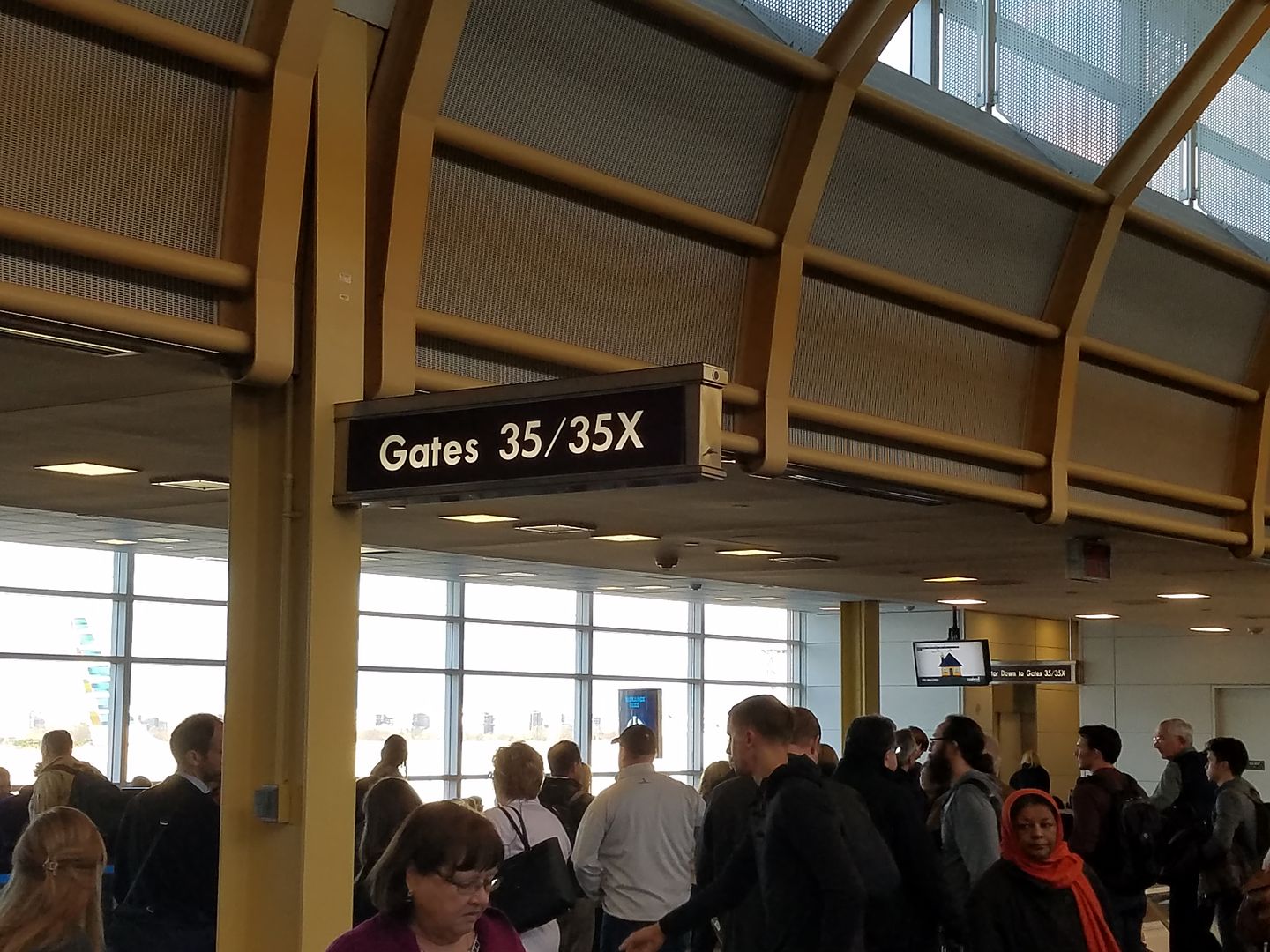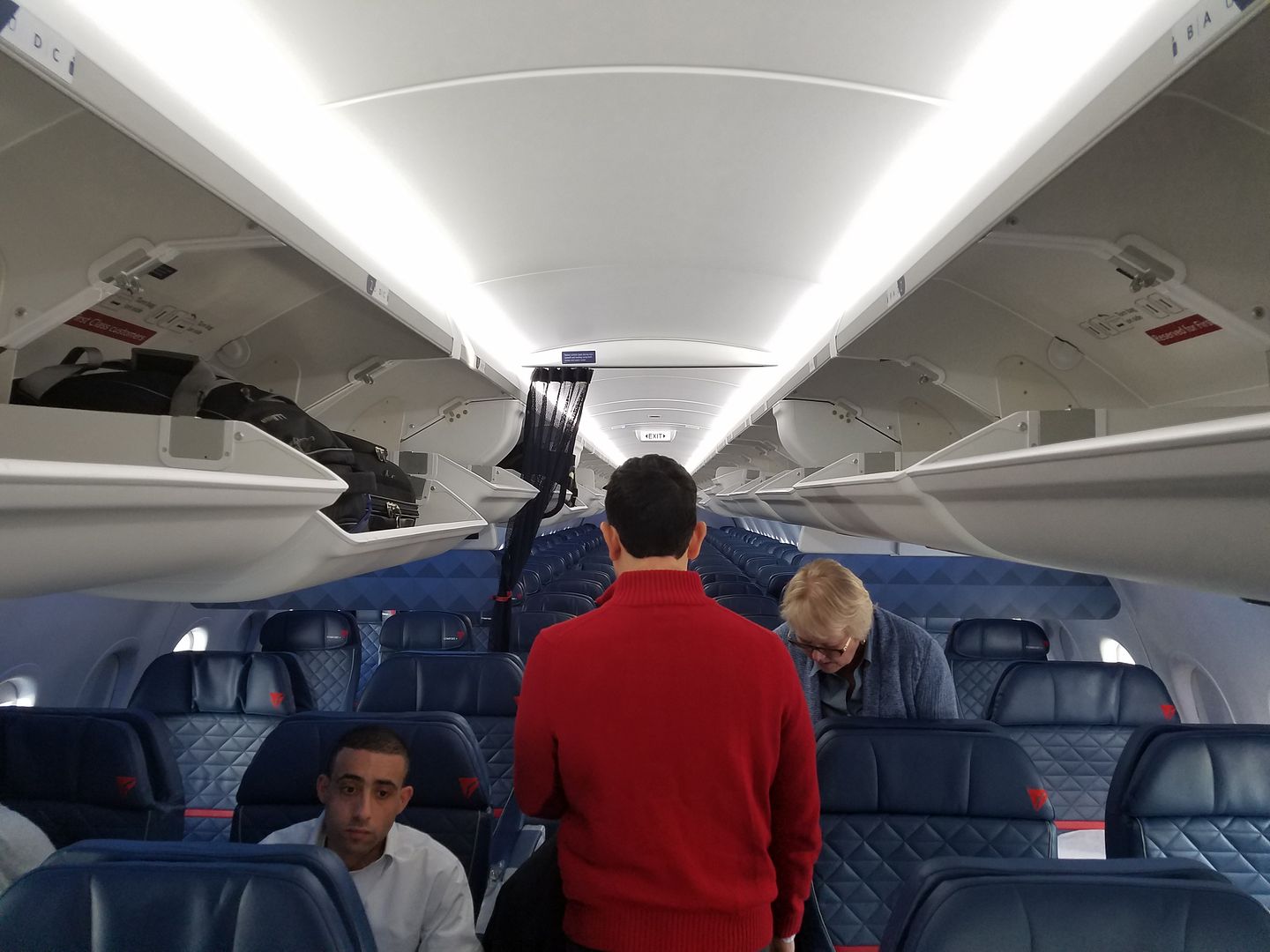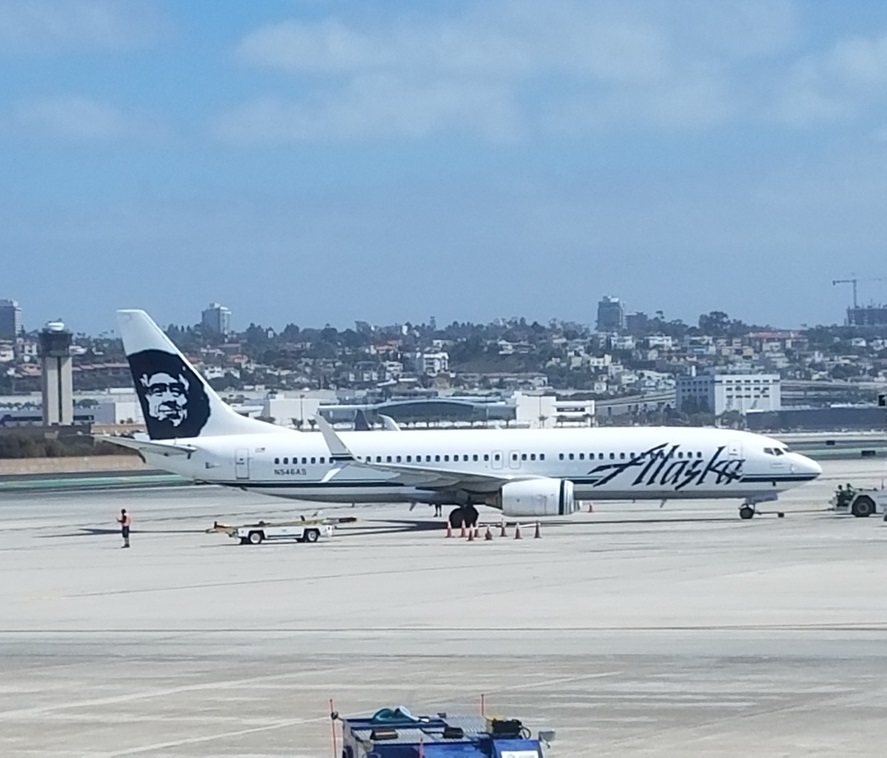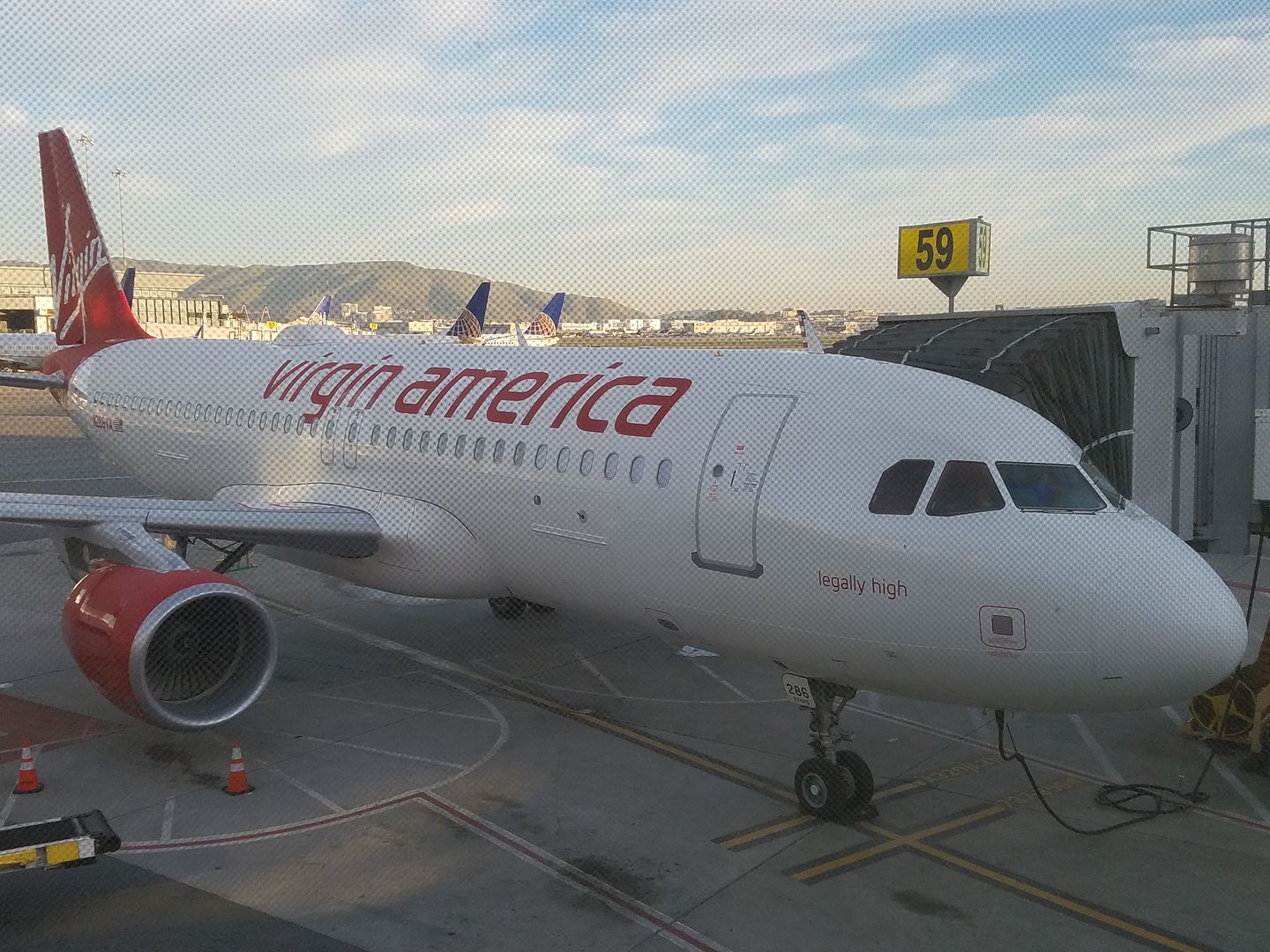Airlines are one of the most heavily regulated industries in the country. Deregulation just meant the government no longer determines who flies where (although in some cases they still do) or how much they’ll charge.
They fly to the same government-owned airports. Their customers go through (mostly) the same government-operated security checkpoints.

Washington’s National Airport

Gate Crowding at Washington National Airport
Most industries have their sales practices (lightly) regulated by the Federal Trade Commission. In exchange for deregulating schedule and price, and avoiding state-level regulation, they got their own federal regulator in the Department of Transportation which wants all airlines to sell tickets using the exact same information provided to every customer and doesn’t want any airline to differentiate itself with technology to allow passengers to stay connected by phone inflight. (Innovation requires the freedom to try things you – and many others – won’t like.. and to fail.)
In most industries customer experience is key to loyalty and profit.
In the airline industry there are only small tweaks individual airlines make to differentiate themselves. Delta and Alaska offer marginally better reliability. Delta is bringing back inflight meals we used to make fun of to 12 routes in economy. But otherwise the product is largely a commodity.

Airlines managed to de-commoditize their product with frequent flyer programs, one of the greatest marketing innovations of all time which not only created brand loyalty for what was essentially the same thing everyone else was selling but which was so successful other industries from real estate to financial services laid to rent their programs.
Now the major US airlines – outside of Alaska – have given up differentiating themselves via their frequency programs.

To a large extent airlines have a deal with government. They have consolidated, so they want more protection from competition and less space to innovate. “Capacity discipline” – a la OPEC (which largely hasn’t worked) is their strategy for consistent profits albeit limited growth.

It’s exactly what you’d expect from a static regulated industry, yet ironically those in it seem to think it’s dynamic – flying the same planes to the same places with largely the same seats and service and legroom and now even similar marketing programs with the same 12 cents per mile minimum spend for elite status.
Peter Thiel has expressed disappointment even in the more dynamic tech sector, ‘we were promised flying cars and all we got was 140 characters.’
In 15 years planes could fly and navigate like driverless cars but we’ll never let them. Interests and narrative line up to entrench a status quo of sameness.
The last moderately successful startup was Virgin America, and Alaska Airlines bought them because they couldn’t get good gates and landing slots at congested airports (nor could any other new entrant).

Virgin America “Legally High”
What’s more, at many hubs the major carrier largely has a lock on its government-owned host.
Don’t expect things to get better any time soon, although I still believe that in recession frequent flyer programs will get incrementally more generous on the earn side to fill empty seats (and then devalue again on the burn side to limit costs).


Amen.
Gary is spot on. The main differentiation between the major airlines is the weather their hub airport. All the more reason to be a free agent and just take the flight that suits you. There is no such thing as loyalty any more.
Amen to all of the above. Legacy carriers are all done.
This piece just shows the ignorance of the writer. There’s nothing similar between Southwest and United and Jet Blue and Virgin America, other than they all transport people and their baggage. It’s just like McDonald’s and In-N-Out and Shake Shack: they all sell burgers, so they’re the same, right?
I also don’t know of any consumer industry that does not have to sell its product “using the exact same information provided to every customer”! This is the reason why you pay the same exact price for a gallon of milk that anyone else in the same store does, and that the advertising that the store places is identical everywhere (“every customer has the exact same information” — the horror!). “Individualized” pricing has been outlawed a very long time ago, and for very good reasons. To imply that making “all airlines to sell tickets using the exact same information provided to every customer” is bad shows utter ignorance of free markets. They can only work if information costs are negligible.
Only if you are the seller or are part of the 0.1% you can even think that rigged markets (where pricing is “individualized”) are good, since they enable oppressive pricing to take place to outrageously favor the seller.
@Henry I hear Venezuela is beautiful this time of year – you should check it out! But BYOB (bread) in case they happen to run out again while you’re there.
Gary’s points are valid, but they ignore the trend of airlines becoming less discernible as competition diminishes. A more complete comparison would be: airlines during regulation, airlines during high competition, and airlines during low competition.
A good post with one minor disagreement on my part. The Alaska/Virgin merger was not so much about acquiring gates at congested airports a s it was about Alaska’s need to get bigger fast which is slightly different.
Imagine if Alaska had a national footprint and an international route network or was a member of an alliance (it already has some great partners). Then I bet we would see some real enhancements to Big 3 ff programs as their customers deserted them. How can Alaska get a Midwest or East Coast hub?
That the big 3 US airlines are the same doesn’t have anything to do with government. It has to do with Corporate CEO credo these days–be bland, play it safe, and no sticking your neck out because then it can be chopped off. If a CEO follows these rules then he’s got it made for life.
I think in this environment it would be rather easy to excel and gain market share by distinguishing your airline properly and promoting those differences. Southwest is successful because it does (only) a smidgen of that.
Airline differentiation between UA, AA and DL: our seats are pleather blue, our seat pitch, width, number of seats varies only slightly, our destinations and service levels are more or less equal, our pricing varies only little, our FF programs are very similar, our planes are more or less the same mix (with some variety in number of planes from one model to another between the three), one month AA sucks in on-time arrivals, the next month UA.
If you would fall asleep on a DL plane, and in your sleep would be placed on a UA/AA plane, would you notice when you wake up? Sameness rules.